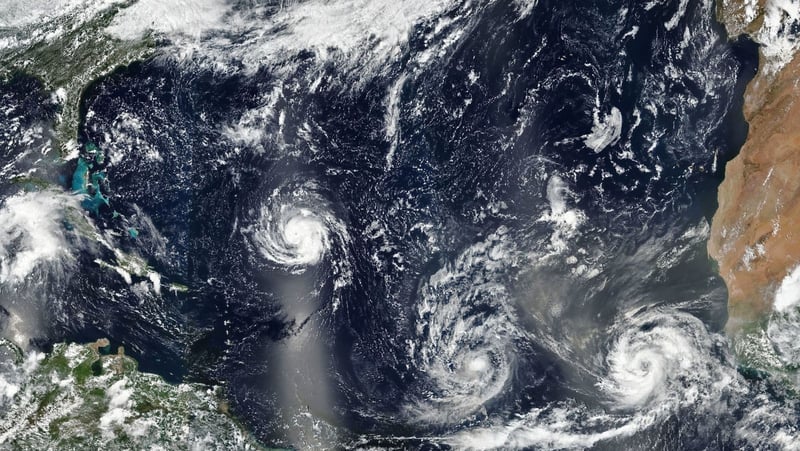Tropical Storm Helene has formed in the Caribbean Sea and is expected to intensify into a major hurricane as it moves north toward the United States. Already, heavy rains and large waves have impacted the Cayman Islands, prompting some residents in Florida to evacuate and prepare for potential flooding by filling sandbags.
Hurricane watches are now in effect for portions of Cuba, Mexico, and parts of Florida’s coastline, including Tampa Bay, as reported by the U.S. National Hurricane Center. A tropical storm warning has also been issued for parts of the Florida Keys. As of now, the storm is located about 150 miles (240 kilometers) south of western Cuba, with sustained winds of 50 mph (85 kph) and moving northwest at 12 mph (19 kph). Forecasters predict that Helene could strengthen into a hurricane by Wednesday and potentially become a major hurricane by Thursday.
In anticipation of Helene’s arrival along Florida’s Gulf Coast as early as late Thursday, federal authorities have mobilized resources, including generators, food, and water, while President Joe Biden declared an emergency for the state. Florida Governor Ron DeSantis expanded the high-risk area to include 61 counties, an increase from 41.
The impending storm has caused NASA and SpaceX to postpone a planned astronaut launch originally scheduled for Thursday, while Florida A&M University has also rescheduled its upcoming football game against Alabama A&M. Due to the storm’s large size, meteorologist Larry Kelly has urged residents to pay attention to its widespread impact, with around 10 counties in Florida issuing evacuation orders or recommendations.
Hal Summers, a restaurant worker from Mexico Beach, Florida, is among those taking the storm seriously after narrowly escaping the destruction of Hurricane Michael in 2018. DeSantis noted that Helene resembles Hurricane Michael, which unexpectedly intensified and devastated the Florida Panhandle.
If Tropical Storm Helene follows similar paths as two recent hurricanes, recovery efforts in Florida may be quicker, according to state financial officials. Helene is expected to pass over warm waters, which could aid in its intensification. Residents in areas under storm warnings should prepare for power outages and stock up on supplies for at least three days.
Helene marks the eighth named storm of the Atlantic hurricane season and could potentially escalate to a major Category 3 hurricane, bringing winds of at least 111 mph (178 kph) as it nears the northeastern Gulf Coast. Since the year 2000, Florida has experienced eight major hurricanes making landfall. The anticipated large size of Helene means that its storm surge, wind, and rainfall could affect areas far from the storm’s center, with states as far inland as Tennessee, Kentucky, and Indiana expected to receive rainfall.
A tropical storm warning is currently in place for Florida’s Dry Tortugas and lower Florida Keys, as well as regions of Mexico and Cuba. Authorities in the Cayman Islands have closed schools, airports, and government offices due to strong winds that have already caused power outages in some areas.
The storm is expected to move between Cuba and Mexico’s Yucatan Peninsula early Wednesday, making its way north across the Gulf of Mexico. Forecasters predict rainfall totals of up to 8 inches (20 centimeters) for western Cuba and the Cayman Islands, with isolated areas possibly receiving up to 12 inches (30 centimeters). The southeastern U.S. is also facing potential heavy rainfall, with flash and river flooding threats.
As Helene progresses, a storm surge of up to 15 feet (5 meters) is expected from Ochlockonee River, Florida, to Chassahowitzka, while additional surge impacts are anticipated in other areas. The Atlantic hurricane season runs from June 1 to November 30, with the National Oceanic and Atmospheric Administration forecasting an above-average season due to record-warm ocean temperatures.
In the Pacific, former Hurricane John caused significant damage in Mexico, resulting in two fatalities after strong winds and mudslides impacted coastal areas.



